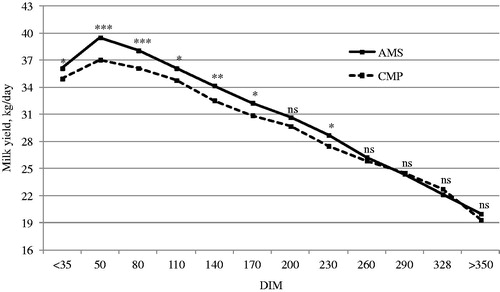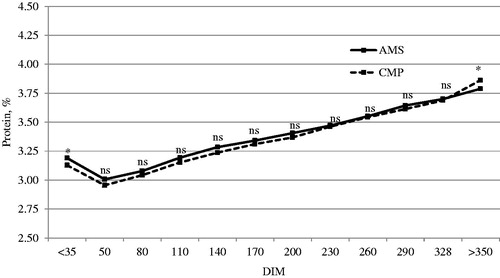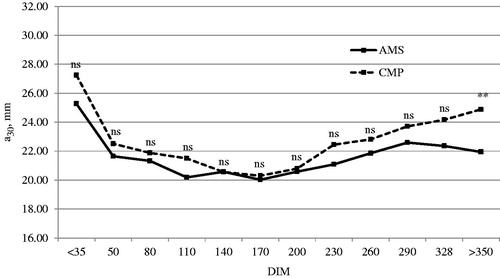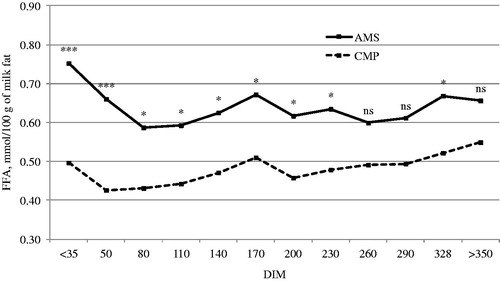Figures & data
Table 1. p-ValueTable Footnotea of fixed effectsTable Footnoteb included in the statistical analysis of milk yield, quality traits, coagulation properties and fatty acid composition, and least squares means (standard errors within parentheses) of the studied traits for milking system effectTable Footnotec.
Table 2. Least squares means (standard errors within brackets) of milk yield, kg/d, for the interaction effect between milking systemTable Footnotea and parityTable Footnoteb.
Figure 1. Least squares means of milk yield for the interaction effect between milking system (AMS: automatic milking system; CMP: conventional milking parlour) and days in milk (DIM). Significance of the differences between least squares means of AMS and CMP within each class of DIM is reported above the solid line. ns, not significant; *p < .05; **p < .01; ***p < .001.

Figure 2. Least squares means of protein percentage for the interaction effect between milking system (AMS: automatic milking system; CMP: conventional milking parlour) and days in milk (DIM). Significance of the differences between least squares means of AMS and CMP within each class of DIM is reported above the solid line. ns, not significant; *p < .05.

Figure 3. Least squares means of curd firmness (a30) for the interaction effect between milking system (AMS: automatic milking system; CMP: conventional milking parlour) and days in milk (DIM). Significance of the differences between least squares means of AMS and CMP within each class of DIM is reported above the dashed line. ns, not significant; **p < .01.

Figure 4. Least squares means of free fatty acids (FFA) for the interaction effect between milking system (AMS: automatic milking system; CMP: conventional milking parlour) and days in milk (DIM). Significance of the differences between least squares means of AMS and CMP within each class of DIM is reported above the solid line. ns, not significant; *p < .05; ***p < .001.

